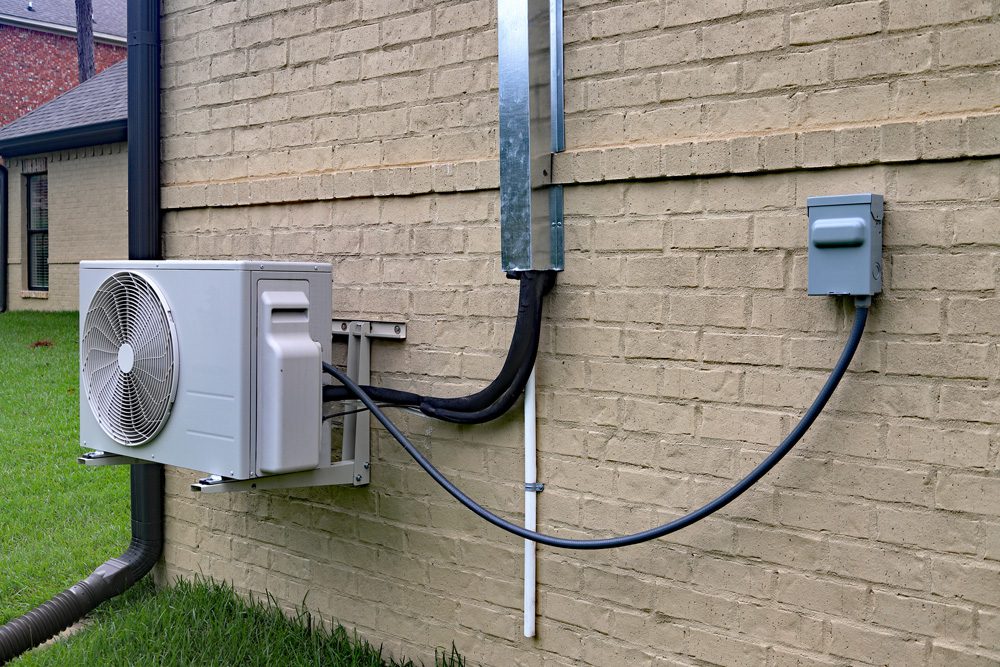The Ultimate HVAC Mini Split Installation Guide

A mini split system is a practical solution for homeowners who want efficient heating and cooling without the need for ductwork. Unlike traditional HVAC systems, mini splits allow for zoned temperature control, making them ideal for homes with specific heating and cooling needs. If it is an older home without ducts, a newly converted space, or a supplement to an existing system, an HVAC mini split installation offers flexibility and improved efficiency.
Where a Mini Split System Works Best
Mini split systems work well in many settings. Homes without existing ductwork, such as older houses and historic properties, benefit greatly from this system. It also serves as an efficient choice for additions, garages, basements, as well as attics where extending ductwork is impractical. Homeowners struggling with inconsistent temperatures in certain rooms can also use mini splits to balance comfort without affecting the entire home’s system.
Placement Considerations for Mini Split Installation
The success of an HVAC mini split installation depends on proper placement. Indoor units come in wall-mounted, ceiling-mounted, and floor-mounted options. Wall-mounted units are the most common due to their ease of installation and effective airflow. Ceiling-mounted units work well for rooms with limited wall space, while floor-mounted units fit best in areas with low ceilings or sloped walls.
The outdoor unit should be placed in an area with sufficient airflow and clearance. It should not be blocked by shrubs, walls, or other obstructions that could restrict ventilation. The location should also be away from direct sunlight and sources of excessive dirt or debris, which could impact performance.
Why DIY Installation Is Not Recommended
Although mini split systems do not require ductwork, their installation is still complex. It involves electrical wiring, refrigerant line connections, and precise measurements. Any mistakes can lead to reduced efficiency, leaks, or even system failure. A professional HVAC technician understands the necessary procedures and tools required for a proper installation.
A major concern with DIY installation is the risk of refrigerant mishandling. Incorrectly charging the system can lead to inefficiencies and safety hazards. Refrigerant lines must be connected properly and pressure-tested to avoid leaks. Electrical connections also require careful handling to prevent damage to the system or electrical panel.
The Role of Refrigerant Lines in Performance
Refrigerant lines connect the indoor and outdoor units, allowing heat transfer to occur. These lines must be the correct length and properly insulated to maintain efficiency. If the lines are too long, the system may lose efficiency, resulting in higher energy consumption. Improper insulation can also lead to condensation and potential damage to walls or flooring.
Professional installers measure and cut refrigerant lines to fit each home’s specific layout. They also vacuum the lines to remove moisture and contaminants, which helps the system operate smoothly. Proper installation makes sure that the mini split performs efficiently, leading to consistent comfort throughout the year.
Efficiency Benefits of Mini Split Systems
Mini splits offer high energy efficiency, making them a cost-effective heating and cooling solution. Unlike traditional systems that condition an entire home, mini splits allow targeted temperature control. This feature reduces energy waste and lowers monthly utility bills.
The seasonal energy efficiency ratio (SEER) rating is a key factor when selecting a mini split system. Higher SEER ratings indicate better energy performance. Placement of indoor and outdoor units also plays a role in maximizing efficiency. A professional installer can assess the best location to optimize performance and reduce energy consumption.
Common Mistakes in Mini Split Installation
Several mistakes can occur when installing a mini split system without professional help:
- Improper Sizing: A system that is too large will short cycle, leading to energy waste and temperature fluctuations. A system that is too small will struggle to maintain comfort.
- Incorrect Refrigerant Levels: Overcharging or undercharging the system can cause reduced efficiency and potential damage to the compressor.
- Insufficient Clearance: Both indoor and outdoor units need proper airflow. Installing them in tight or obstructed areas can affect performance.
- Poorly Secured Mounting: Indoor units should be mounted securely to avoid vibrations and noise.
Professional installation helps homeowners avoid these common errors, making sure long-term performance and reliability.
How Professional Installation Enhances Comfort
An experienced technician understands how to optimize a mini split system for maximum comfort. Proper placement, refrigerant charge, and electrical connections contribute to reliable heating and cooling throughout the year. With professional installation, homeowners can enjoy a smooth and efficient experience without the risks of improper setup.
For expert HVAC installation services, working with skilled professionals guarantees that your system is installed correctly the first time. This approach protects your investment and makes sure lasting comfort in your home.
The Best Way to Maintain a Mini Split System
Regular maintenance extends the lifespan and efficiency of a mini split system. Cleaning filters, inspecting refrigerant levels, and checking electrical connections help prevent breakdowns and costly repairs. Dust and debris can accumulate inside the indoor unit, leading to restricted airflow. Homeowners should clean or replace filters as needed to maintain efficiency.
Outdoor units also need periodic inspection. Leaves, dirt, and debris can block airflow, causing strain on the system. Keeping the outdoor unit clear of obstructions prevents unnecessary wear and improves performance.
Scheduling professional HVAC maintenance at least once a year makes sure that all components remain in top condition. A trained technician can identify and fix small issues before they become expensive repairs.
Why Ashburn HVAC Services Is the Right Choice
HVAC mini split installation requires experience, precision, and knowledge. At Ashburn HVAC Services, we take the complexity out of the process by offering expert guidance and installation. We assess your home’s layout, determine the best placement for maximum efficiency, and handle every step with care.
Our team is committed to delivering reliable heating and cooling solutions that fit your needs. If you are upgrading your system or installing a mini split for the first time, we make the process seamless. Contact us today to schedule an appointment and experience year-round comfort in your home.

